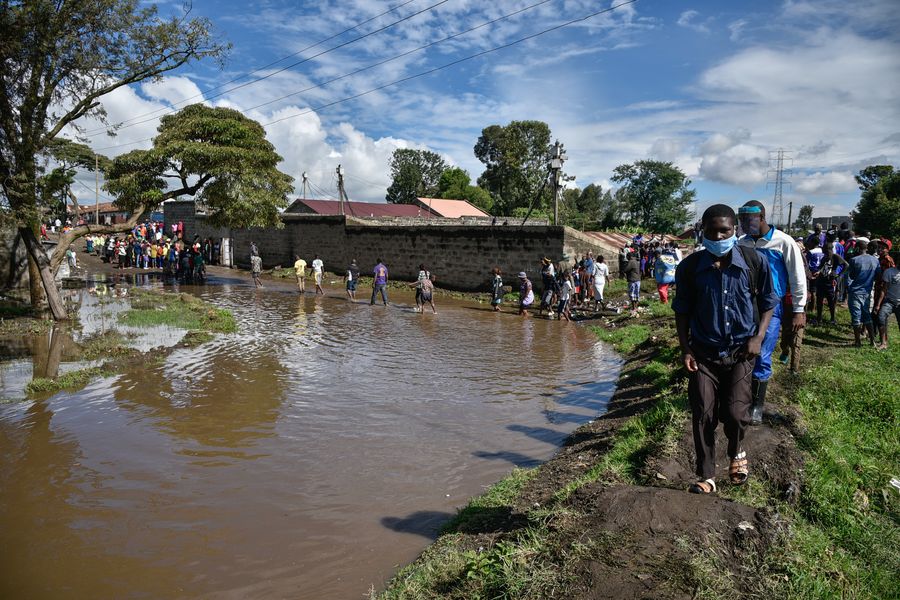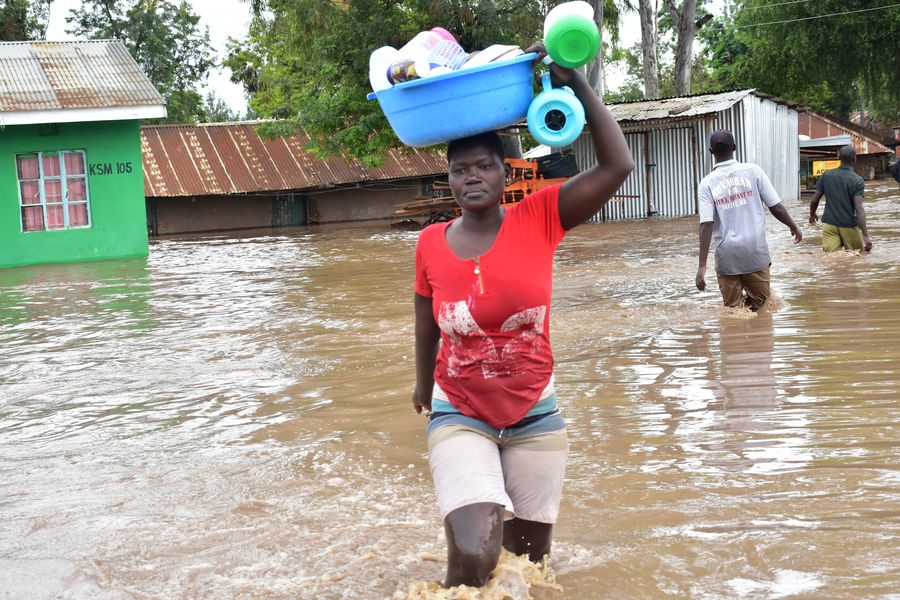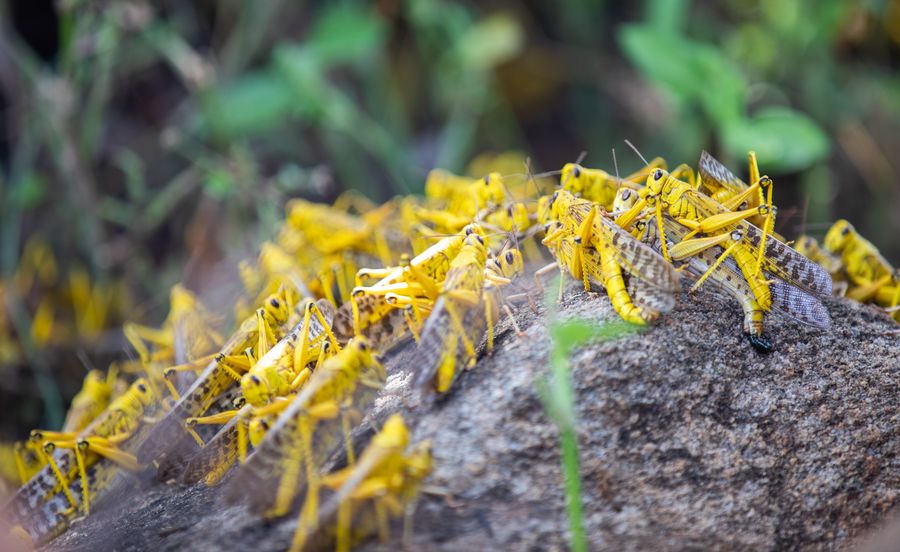
People move to safer grounds after a residential block was flooded following heavy rains at Mwariki Estate in Nakuru, Kenya, May 3, 2020. (Xinhua/Sheikh Maina)
Heavy rains have led to deaths in Kenya and the unusually heavy rains have also fanned the locust menace, piling pressure on the east African nation at a time the country is battling the COVID-19 pandemic.
NAIROBI, May 5 (Xinhua) -- Heavy rains have led to deaths in Kenya, displaced residents and destroyed properties in Kenya as the country grapples with effects of climate change.
The ministry of devolution says the unusually heavy rains have also fanned the locust menace, piling pressure on the east African nation at a time the country is battling the COVID-19 pandemic.
The rains have been intense in particular in the Rift Valley, Coast and in western Kenya, where thousands of people are currently in camps due to landslides and floods.
In western Kenya, hundreds of residents of Ahero in Kisumu and Budalangi in Busia have been displaced after rivers Nyando and Nzoia respectively burst their banks due to heavy rains.
The two rivers empty their water into Lake Victoria, whose waters have also risen to unprecedented levels for the first time in about four decades, flooding homes, according to reports.
"We have relocated to a higher ground at a school. We are far away from the river but the rains are too much this time around that the waters have flooded our homes," Bernard Aura, one of the victims in Budalangi, said on Monday.
For about five years, dikes built by the government were able to hold water at bay preventing flooding in the region.

A woman salvages her belongings after River Nyando broke its banks in Kisumu, Kenya, April 21, 2020. (Xinhua/Fred Mutune)
But the heavy rains that the east African nation experienced between October and December 2019 coupled with the current deluge have caused the trouble.
"We have not had the flood problem for years that we had even forgotten about it but the rains have come with vengeance," said Aura.
At the camps, some people have sheltered in classrooms at schools.
"Three-quarters of Bunyala has been affected by floods. It has not rained this side much but the trouble comes from upstream," noted Aura.
At the camps, Aura said residents are struggling to observe measures to help curb the spread of novel coronavirus. "We are wearing masks and washing hands but there is crowding and that is a problem," he said.
The heavy rains have not only caused flooding in Kenya, but also uprooted bridges, roads and washed away crops leaving residents distraught.
Meteorological director Stella Aura noted the rains would last until next month, but their intensity is currently at the peak.
Away from the floods, the rains have provided a perfect environment for swarms of locusts to thrive.
Thanks to the moist environment, locust eggs have been able to hatch into new swarms and found lush vegetation to feed on and thrive.

A swarm of desert locusts invade parts of Mwingi Town in Kitui County, Kenya, Feb. 20, 2020. (Xinhua/Zhang Yu)
The government has intensified spraying of the locusts especially in the north, the region most affected.
But the Food and Agriculture Organization of the United Nations (FAO) warns that the situation is a threat to food security.
"The second generation of locust breeding is about to start in Kenya. The spring breeding will cause a further increase in locust infestations in Kenya and across east Africa," says FAO in its latest locust watch update.
The UN body observes that the current situation in east Africa remains extremely alarming as more swarms form and mature in northern and central Kenya.
"This represents an unprecedented threat to food security and livelihoods because it coincides with the long rains and the current growing season," says FAO.
Beatrice Macharia of Growth Point, an agro consultancy, noted that the heavy rains have brought mixed fortunes in the east African nation.
"Yes, in many parts of the country crops are flourishing, but the floods have washed away plants in other areas and the invasion of locusts in regions where plants are thriving remains a big threat. This is a manifestation of climate change at its best," she said. ■



